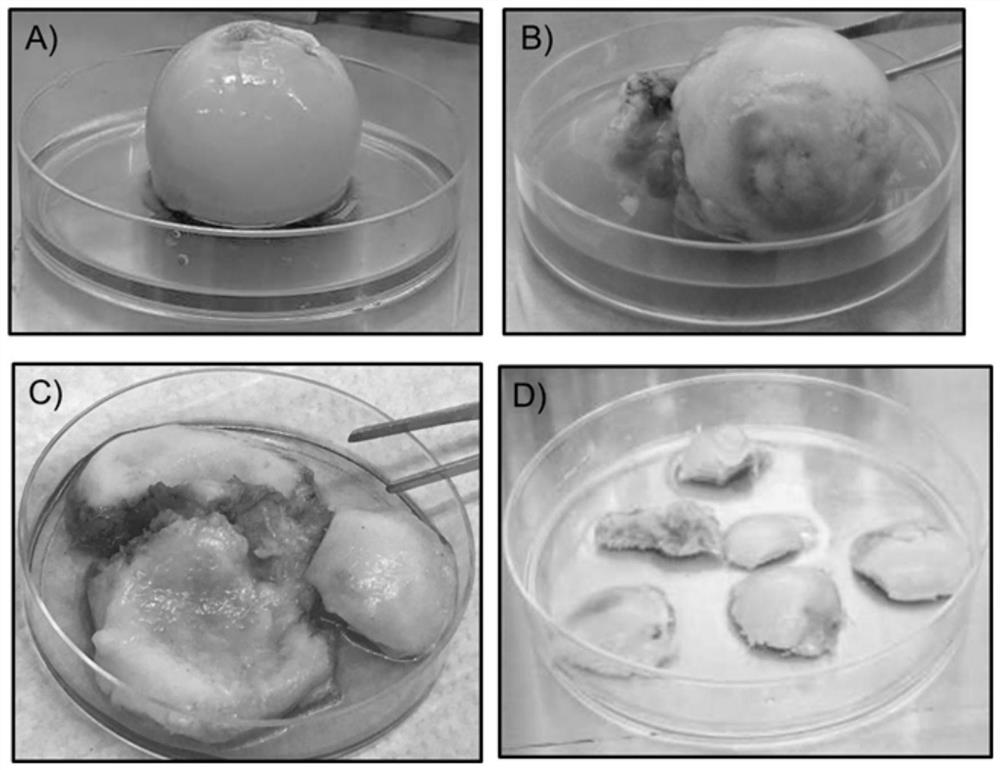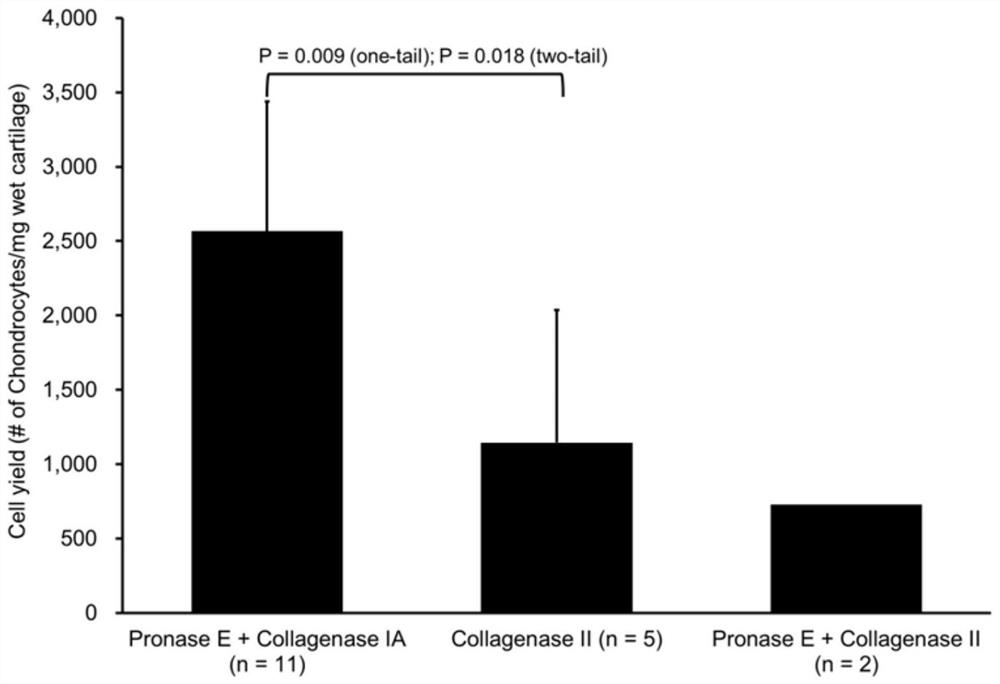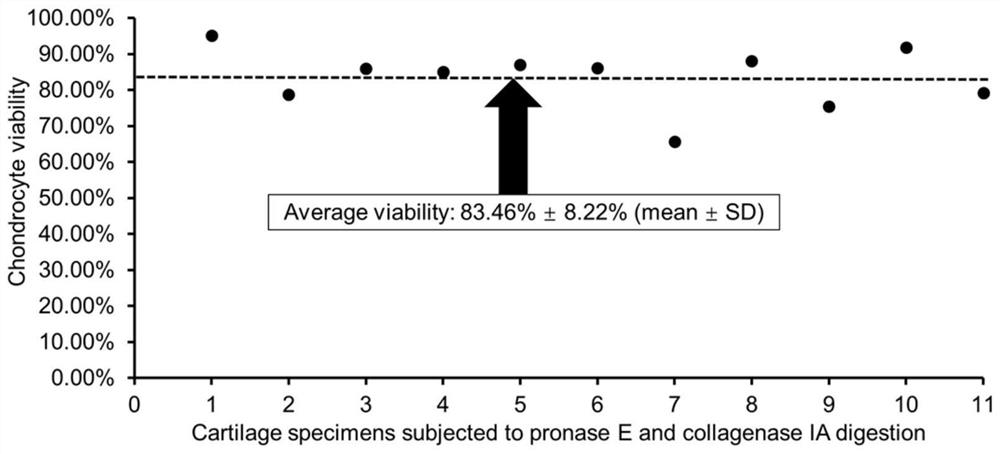A method for isolating and culturing cells from aged human synovial articular cartilage
A technology for the separation of synovial joints and cartilage, which is used in the field of separating and culturing cells from synovial articular cartilage of the elderly, and the field of primary human cell culture. It can solve the problems of low activity and low cell yield, achieve low pollution probability, and promote in vitro proliferation. , the effect of large scale
- Summary
- Abstract
- Description
- Claims
- Application Information
AI Technical Summary
Problems solved by technology
Method used
Image
Examples
Embodiment Construction
[0027] Applicants used 18 cases of femoral head or tibial plateau cartilage tissue (17 from patients with femoral neck fractures who underwent total hip replacement surgery and 1 from patients with advanced osteoarthritis who underwent total knee replacement surgery. All patients were 65 years of age over the age.
[0028] Hereinafter, a specific embodiment of the present invention will be further described by taking a femoral head specimen produced from hip arthroplasty as an example.
[0029] In the operating room, put the removed femoral head into a sterile sampling bag filled with sterile saline, and after sealing it, transport it from the operating room to the cell culture room in an ice box within four hours after the operation. In a biosafety cabinet with sterile air blowing, transfer the femoral head from the sterile sampling bag to a sterile 15 cm petri dish, and add about 10 ml of DMEM / F12.
[0030] Specific sources such as figure 1 As shown, A is the tissue of the...
PUM
| Property | Measurement | Unit |
|---|---|---|
| diameter | aaaaa | aaaaa |
| pore size | aaaaa | aaaaa |
Abstract
Description
Claims
Application Information
 Login to View More
Login to View More - R&D
- Intellectual Property
- Life Sciences
- Materials
- Tech Scout
- Unparalleled Data Quality
- Higher Quality Content
- 60% Fewer Hallucinations
Browse by: Latest US Patents, China's latest patents, Technical Efficacy Thesaurus, Application Domain, Technology Topic, Popular Technical Reports.
© 2025 PatSnap. All rights reserved.Legal|Privacy policy|Modern Slavery Act Transparency Statement|Sitemap|About US| Contact US: help@patsnap.com



